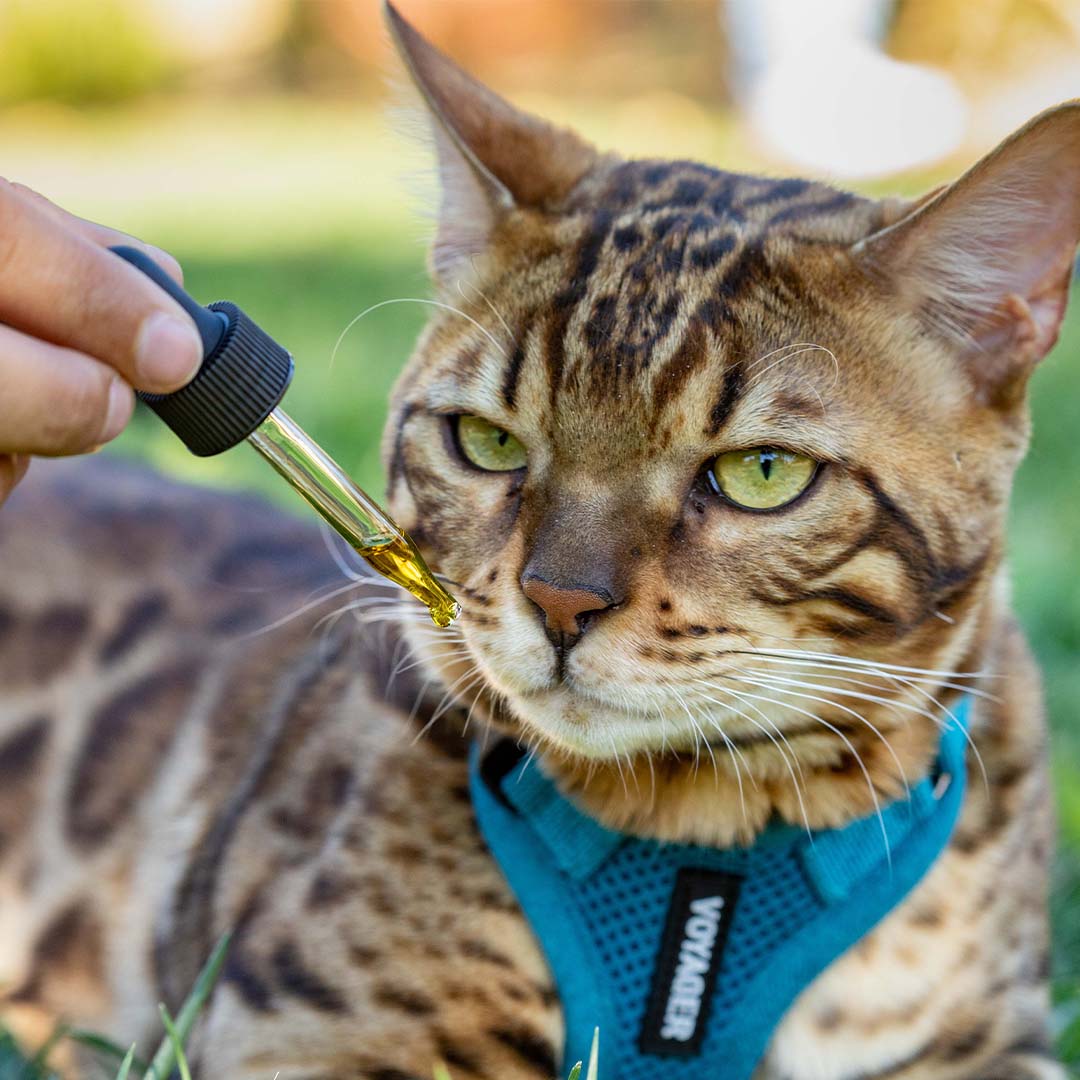Cats are adorable. They look so cute when they are sleeping (especially when they cover their face with a paw). It's hilarious to watch them play. And we love cuddling with them on the couch after a long day! But, we can't deny that their nails can hurt. So you're probably wondering how to clip a cat's nails without getting attacked.
Contrary to popular belief, it's completely possible to clip a cat's nails without becoming a scratching post. You just need the right techniques and preparation. We can tell you how to get your cat used to the process so you can trim their nails without any stress. Your cat (and your arms) will thank us!
Is It Important to Clip Your Cat's Nails?
The Humane Society states that trimming your cat's claws is part of maintaining your pet's health. It's a quick and effective alternative to declawing your cat, which is a surgical procedure that is considered cruel by many veterinarians.
If you don't cut your cat's nails, there is a possibility of them growing too long. Trust me; you don't want to see a cat with overgrown nails! The claw will curl on itself once it reaches a certain length. What's worse, the nail can grow into your cat's footpad and cause them a world of pain.
Nail trimming also keeps you, your family, and your furniture safe from your cat's claws. Sure, your cat doesn't mean to turn your beautiful rug into a mess of shaggy fibers, but their claws might anyway. If your cat is a habitual couch scratcher, you definitely want to keep its claws short to prevent unsightly damage to your sofa.
If you still want to keep your cat's nails short, clipping them is often the best option. Other cat owners put caps on their cat's claws, which has mixed results. But, you can only put caps on once you've clipped your cat's claws anyway.
Is It Ok to Clip My Cats Nails?
It's perfectly fine to clip your cat's nails. In fact, it's recommended! Nail clipping is especially important if your cat's claws are long or unruly. Cats with long nails might hurt you and damage furniture or other objects in your home by accident.
Your cat might not like the process, but there are ways to make it easier for both of you. You can also hire a pet groomer or make an appointment with a vet if necessary.
What Happens If You Don't Clip Your Cat's Nails?
Always keep a close eye on your cat's paws. Some cats (especially seniors) don't engage in behaviors that naturally shorten their nails (like scratching cardboard and scratching posts). This can allow nails to grow too long, puncturing their paw pads. Overgrown nails can lead to painful wounds and even infections.
Long claws have other downsides as well. If you find yourself getting scratched when your cat is trying to cuddle or play with you, their claws might be too long. Clipping will cut down on these accidental scratches.
Plus, your cat's long nails will damage your home. Some cats might scratch couches out of habit, while others cause damage without realizing it. For example, a cat with long nails might rip up planners and blankets just by sitting on them.
How Do I Know My Cats Nails Need Clipping?
You can easily tell if your cat's nails are too long just by looking at (or feeling) them. But if you're unsure, there are some signs to watch for. Here's how to spot if your cat has nails that are too long:
- Curled claws that go inward and dig into their paw pads
- Unable to retract claws
- Not scratching anything
- Signs of arthritis or joint discomfort
- Limping
- Bleeding on toes or paw pads
- Excessive paw licking due to discomfort
- Lethargic
- Refusal to use a litterbox to avoid further irritation
Do All Cats Need Nail Clipping?
While trimming your cat's nails is never a bad thing, it's not always necessary. Some cats need nail trimming more than others. This includes senior cats who don't spend as much time exercising and scratching. Longhaired cats have fur that might also get in the way of their natural nail process.
How Often Do You Need to Clip a Cats Nails?
Veterinarians recommend that you trim your cat's nails every 10 days or two weeks. This time frame differs for each cat depending on how fast their nails grow.
What Do I Need to Clip My Cats Nails?
There are a wide variety of tools available to trim your cat's claws. You're bound to find one that works best for your cat's specific needs and your requirements. Here are some tools to consider:
- Nail scissors: These are easy to handle since you hold them kind of like a pair of scissors. They also hold your cat's claw in place, making it safer for cats that are less than happy with the nail trimming process.
- Human nail clippers: Human nail clippers are safe to use if you keep in mind the proper nail trimming process (which we will go over below). It might be harder if your cat is squirming, however.
- Plier clippers: These have a sliding "guillotine" blade that gives you a bit more control if your cat is tougher to handle.
No matter which tool you choose, make sure the blade is sharp. A dull blade might hurt your cat, splitting their nail and even causing them to bleed. Make sure you have a dry bar of soap and cornstarch nearby to stop bleeding if this happens.
How to Clip a Cat's Nails
Cat owners can be pretty nervous about clipping their cat's nails (maybe even more than their cats). Cats might be cute, but their claws are seriously sharp, and it can be scary being right up and personal with them. Here are some tips to help make clipping your cat's nails easy and painless.
Get Them Used to You Touching Their Paws
Some cats are more tolerant of people touching their paws than others. It's always best to start handling their paws when they are a kitten, gently patting and holding them (both front and back) so they become familiar with the sensation. If they are older, you can still do this daily to get them used to you being around their toes.
Encourage More Paw Touching
Hold one paw carefully between your fingers. Focus on just rubbing it gently at first. Do this for a few seconds. If your cat remains calm, squeeze the paw slightly so one nail extends. Release their paw immediately and give them a treat right after. Do this multiple times a day prior to the trimming.
Leave the Clipper Out
Your cat might become frightened when you move towards them with the clipper in your hand. They won't like this weird object being thrust at them. To get them used to the clipper, leave it in an area they often frequent (like their cat bed or tree). You might even want to spray it with CBD catnip spray or leave a treat near it.
While holding your cat in your lap or squeeze their paw, use the clipper to snap a piece of dry spaghetti. This will make a cracking sound similar to when their nails are cut. Be sure to give them a treat right after. This practice gets them used to the sound of the nail clippers!
Set the Mood
Clip your pet's nails in a quiet, calm location in your home where your cat is comfortable. Keep them away from things that may distract them, like a window or dog. You can also place a blanket or pillow on your lap to make them a bit comfier.
You should also trim their nails around the same time each day, usually after a meal when they feel more relaxed and tired.
The Clipping Process
The big moment! Don't worry — practice makes perfect.
- Put your cat on your lap
- Make sure they are facing away from you
- Take one of their paws in your hand and gently press on the pad until their claw becomes visible
- Cut only the sharp point at the end and avoid the quick (more on that in a bit)
- Release their paw and give them a treat right after clipping the first nail
- Once they seem relaxed, repeat this process
- If they seem irritated after a few nails, let them go
- Play with a toy or give them another treat to get them at ease again
How to Avoid the Quick
Each claw on your cat's paw has a darker section. This area, which has all of the nerves and blood vessels, is called the "quick." Cutting this area will hurt your cat and cause them to bleed. Only trim the white, see-through part of the claw. It's safe to just clip off the pointy end of the paw to avoid cutting too deep.
Maintain a Schedule
Remember that you need to cut your cat's nails every two weeks or so. Try doing it near the same time of day each time. Cats love routine, and this will make it much less stressful for your feline friend.
Can I Give My Cat CBD to Help Clip My Cat's Nails?
Giving your cat CBD before a nail trimming session is a great way to make sure they are soothed and calm before the process begins. Try giving them our CBD cat treats or mixing some CBD oil into their food 30 minutes before.
So why CBD? CBD is a non-psychoactive cannabinoid that interacts with the receptors in your cat's endocannabinoid system (ECS). In plain English, this means it won't get your cat high. Instead, CBD enhances overall well-being by promoting healthy digestion, easing soreness, and calming your cat.
Since the ECS includes all of your cat's main systems (immune, digestive, nervous, etc.), the effects of CBD are extensive. When CBD interacts with the receptors in these systems, it helps reduce your cat's stress and physical discomforts. If your cat is especially anxious about nail trimmings, CBD is the perfect way to make them feel at ease.
When Do I Need to Go to a Vet or a Groomer?
While trimming your cat's nails can make you nervous, in most cases, it's very doable with patience, consistency, and the right method. But if you truly can't trim your cat's nails without hurting them (or getting injured), you might need to schedule a vet appointment to have their claws clipped.
Some cats are a bit more aggressive and defensive than others. If you know how to handle a cat properly, you can still safely hold them down while trimming their nails. Some cats may need to be sedated in extreme cases, in which case a vet must clip their nails. We don't recommend sedation if your cat is overweight or elderly.
Final Thoughts - How to Clip a Cat's Nails
Cats use their claws for a lot of things. Self-defense. Playing. Scratching up our favorite chair. Kneading. Claiming territory. Claws are very important for cats. But what can you do to make sure your furniture is safe?
Trimming your cat's nails is the best way to make sure that your cat, your home, and you remain safe from the sharp claws hidden in their fuzzy mittens.
Sometimes it can seem daunting to trim a cat's nails. What if we hurt them? What if we get scratched apart ourselves? Luckily there are techniques to ensure that your next nail trimming session goes smoothly. Just follow our guide or contact a veterinarian, and your cat's claws will be short in no time! Want to know more? Here are some of the basic tips to help keep your cats healthy.








![Probiotics For Dogs [Soft Chews]](http://www.holistapet.com/cdn/shop/files/Probiotic-Infographic-1_472d7a29-e30c-435a-9638-1365d8c3a9f9.jpg?v=1725384841&width=104)






























Leave a comment
This site is protected by hCaptcha and the hCaptcha Privacy Policy and Terms of Service apply.